Sognefjord
Top-Rated Tourist Attractions in Sognefjord
The Sognefjord is the largest of Norway's numerous fjords and is also the third largest in the world. Extending inland for 204 kilometers from Sygnefest to its easternmost point, Skjolden, this spectacular 4.8-kilometer-wide, 6905-meter-deep fjord is only a three-hour drive from Bergenn (five hours from Oslo).
At its eastern end, the fjord splits into a number of narrow arms enclosed by steep rock walls rising to heights of over 1,676 meters, and here and there along the shores, quaint fishing and farming communities nestle at the base of the mountains. With its combination of coastal and continental climates, the inner reaches of the Sognefjord enjoy mild winters and warm summers.
Despite its ruggedness, exploring the Sognefjord is easy and can be done by car, train, or boat, and even by bike. During the summer months, the ships of the Hurtigruten, Norway's superb coastal ferry service, sail frequently from Bergen to Årdalstangen at the east end of the fjord, calling on numerous ports along the way.
In addition to the numerous local boat services and cruise ships, this impressive fleet offers countless tour options for visitors wishing to explore the fjord's spectacular national parks, mountain ranges, glaciers, waterfalls, and numerous other attractions and fun things to do. For ideas on the best places to visit, see our list of the top attractions in Sognefjord.
1. Nærøyfjord
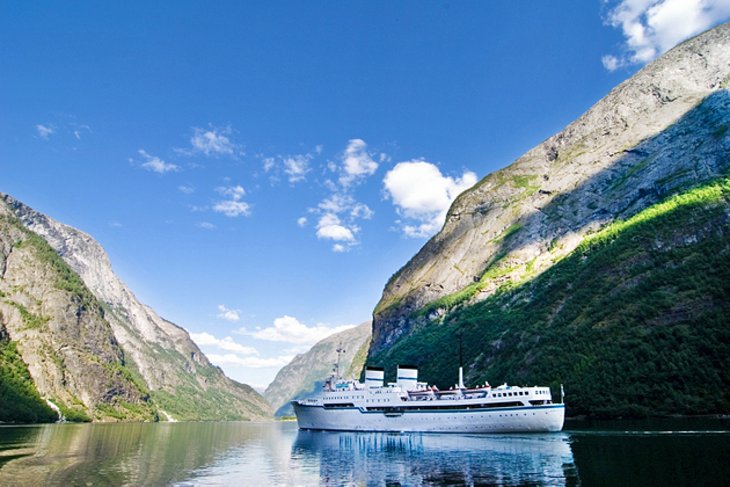
Nærøyfjord
Widely considered one of the most spectacular fjords on the planet, the nearly 18-kilometer-long Naeroyfjord-an arm of the Sognefjord and named after the Norse god of seafaring, Njord-is, at its narrowest point, only 249 meters across. Hemmed in by nearly vertical mountains rising more than 1,706 meters above its tranquil waters, it's an awe-inspiring sight, deemed so important that UNESCO has in fact included Naeroyfjord, along with many other Norwegian fjords, on its World Heritage List.
The village of Gudvangen at the head of the fjord is a great place to begin exploring the area. From here, you can hope aboard a pleasure cruise, or rent a kayak and explore the rugged shoreline under your own steam. You can also start a fun, though steep, hike here, something that does require a great deal of fitness and stamina given the climbing involved.
2. Fjærlandsfjord
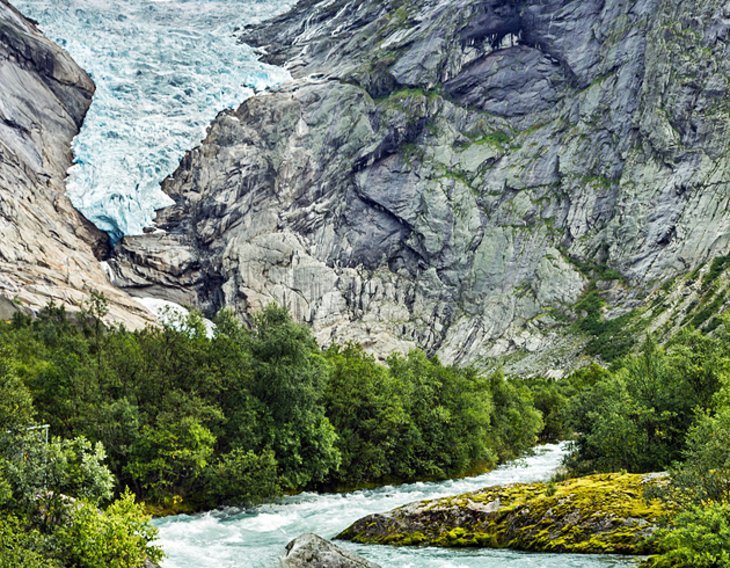
Fjærlandsfjord
Fjærland is the area surrounding a branch of the Sognefjord near Jostedalsbreen, the largest of Europe's glaciers. Taking a walk on or around this magnificent (though sadly retreating) glacier is an unforgettable experience, and a variety of organized hikes and tours are available.
Fjærland is also where you'll find other fun things to do, including visiting the Norwegian Glacier Museum, Norwegian Booktown (an interesting collection of book shops, galleries, and cafés), as well as lovely Hotel Mundal, built in 1891. A number of cruise options are also available around the fjord. From Fjærland, an eleven-kilometer-long tunnel runs under the glacier to Skei, in the heart of the Sogn og Fjordane region.
3. Balestrand
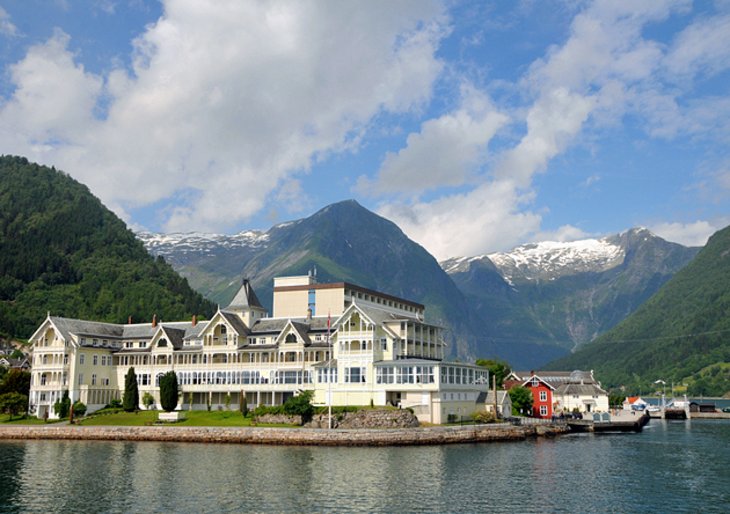
Balestrand
The most attractive of Sognefjord's communities, Balestrand has been a popular tourist destination for well over a century. Much of this popularity stems from its dramatic surroundings, which over the years has lured artists such as Hans Gude, Alfred Heaton Cooper, and Hans Dahl.
Along the town's Cultural Heritage Trail are many historically significant treasures: the Cooper House, St. Olaf's Church, the statue of King Bele with its burial mounds, and numerous lovely old holiday villas. The new Norwegian Museum of Travel and Tourism is a fitting attraction, given the town's popularity as a tourist destination, and features interesting exhibits and artifacts related to the history of travel to the region.
Another great reason to visit is the majestic Kviknes Hotel. Built in the 19th century, the hotel is famous for having been where Kaiser Wilhelm II was holidaying when informed of the assassination of Archduke Ferdinand, the event that sparked WWI (the chair in which he was sitting at the time is still in the hotel).
4. Stave Churches
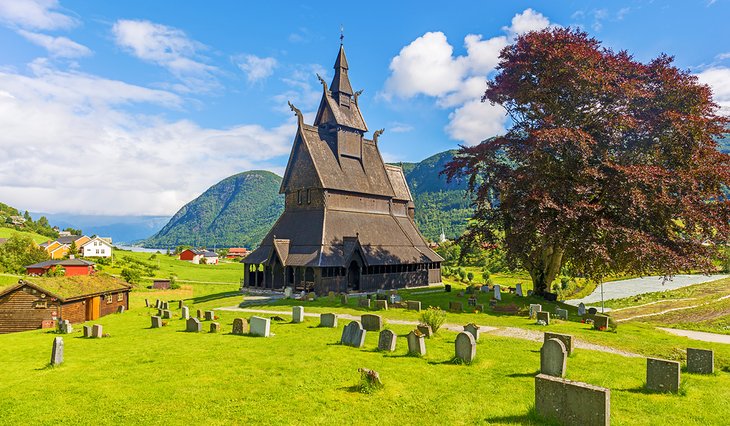
Stave Churches
The Sognefjord is home to some of the best preserved of Norway's few remaining historic Stave Churches. The ornately decorated Hopperstad Stave Church, built in 1140, can be found on the south side of the fjord in the village of Vik, an ancient community consisting of wide and fertile farmland. The 40-seat Undredal Stave Church (1147) is located on the Aurlandsfjord and is the smallest church still in use in Scandinavia.
If you're only able to visit one of these UNESCO-protected buildings, make it Urnes Stave Church on the Lusterfjord, the oldest such church in Norway. Once a private church for a powerful family, this beautifully decorated wood building still retains its nearly 900-year-old timber.
5. Ardalstangen
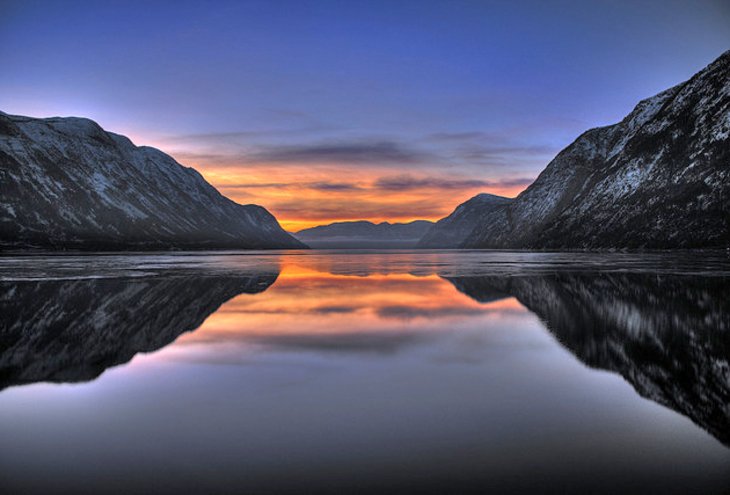
Ardalstangen | Runar Pedersen Holkestad / photo modified
Located in the Årdalsfjord, the most easterly arm of the Sognefjord, the picturesque little town of Årdalstangen is a good place to take a break from all that hiking and sightseeing. With its top hotels, great dining and shopping, as well as its location at the head of the Sognefjord, it's a good base from which to begin exploring the area, whether on a boat tour, or for the adventurous, as part of an outdoor kayaking experience.
6. Vettisfossen
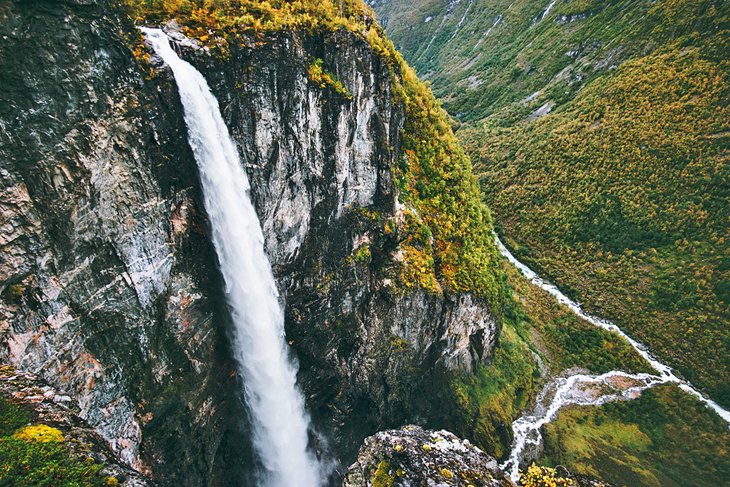
To the north of Årdalstangen, and also on the Årdalsvatn, Øvre Årdal is a great town from which to explore some of Norway's most spectacular waterfalls, including Vettisfossen. While a bit of a hike-the falls are a three- to four-hour walk up the Vettisgjel gorge-it's a must-do. Protected as a natural monument, Vettisfossen has a free fall of 274 meters, making it one of the highest waterfalls in Norway.
Other waterfalls in the area worth exploring include Feigumfossen in Luster, Kjosfossen in Flåmsdalen, and Kvinnafossen between Leikanger and Hella.
7. Flåm Railway Line
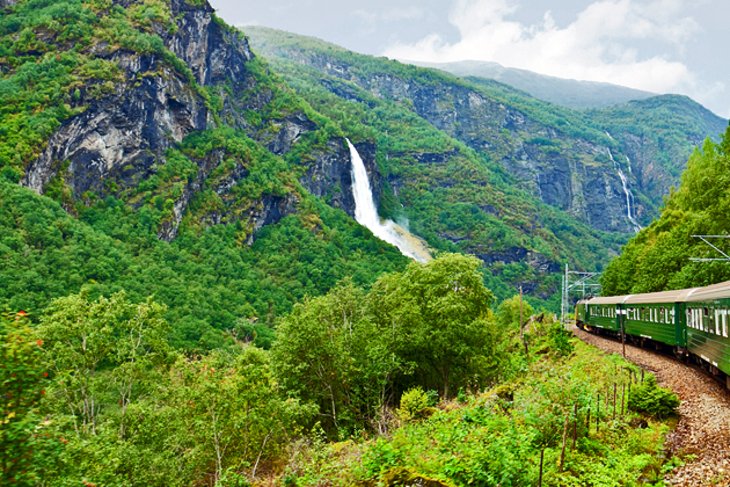
Flåm Railway Line
The Flåm Railway Line (Flåmsbana), the world's steepest standard gauge railway (and Norway's third most popular tourist attraction), provides visitors with close-up views of the Aurlandsfjord's most spectacular scenery, including tall waterfalls and towering snow-capped mountains. This wonderful 20-kilometer engineering feat opened in 1940 and is easy to get to as it's connected to the main train line from Bergen and twists through 20 tunnels before depositing passengers at the foot of the 224-meterKjelsfossen waterfalls.
If you're lucky, you may catch a glimpse of a legendary Huldra, a forest creature from Scandinavian folklore that dances and sings in front of the waterfall. The railway is also a popular tourist destination during the winter months.
8. Kaupanger
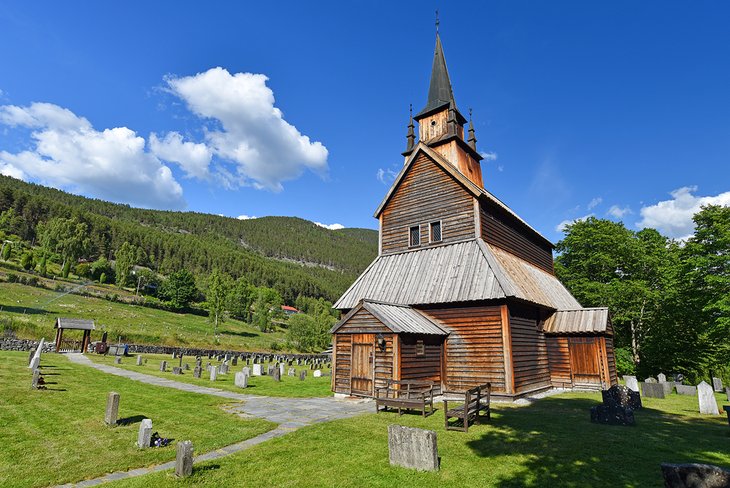
Kaupanger | Karsten K / photo modified
Situated at the head of the Amlabugt, an inlet on the north side of the Sognefjord, Kaupanger was once a Viking settlement. It has a wonderful 12th-century stave church built on the ruins of two previous churches. Also worth visiting is its interesting open-air museum, Heibergske Samlinger, with displays of local life from the Middle Ages to the present. A number of boat cruise options are available.
(thanks to: www.planetware.com)
Comments
Post a Comment